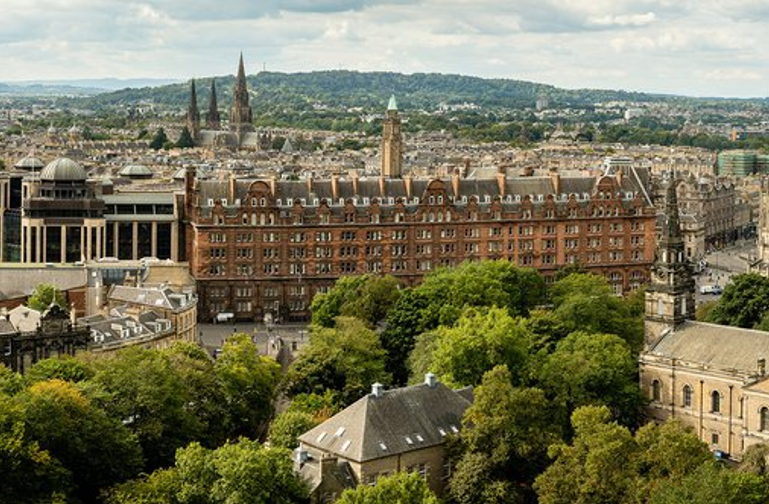Ed. note: Please note that we are not posting this article with the intention of advocating international holidays or driving hundreds of miles once you get there. But we thought John’s insights about the difference between Scottish and US road planning and infrastructure was instructive.
Last month, my wife and I took our 14-year-old daughter on a long-planned, COVID-delayed, two-week trip to Scotland. We spent the first several days of our vacation ranging around Edinburgh on foot. We happily walked 8–10 miles a day, exploring castles and cobblestone streets, monuments and museums, back alleys, public squares, city parks, and tourist traps.
The city was just as beautiful as we had heard, but also more cosmopolitan than I expected. (We heard surprisingly few Scottish accents in the Scottish capital.) Edinburgh was also younger than I expected—not the city itself, which is ancient, but the people who choose to visit, live, and study there. My wife and daughter noticed this, too. We later learned there are six universities in Edinburgh, and that among the city’s half-million residents, 12% are students. I was reminded of Jane Jacobs’ maxim that new ideas need old buildings. Edinburgh has lots of both.
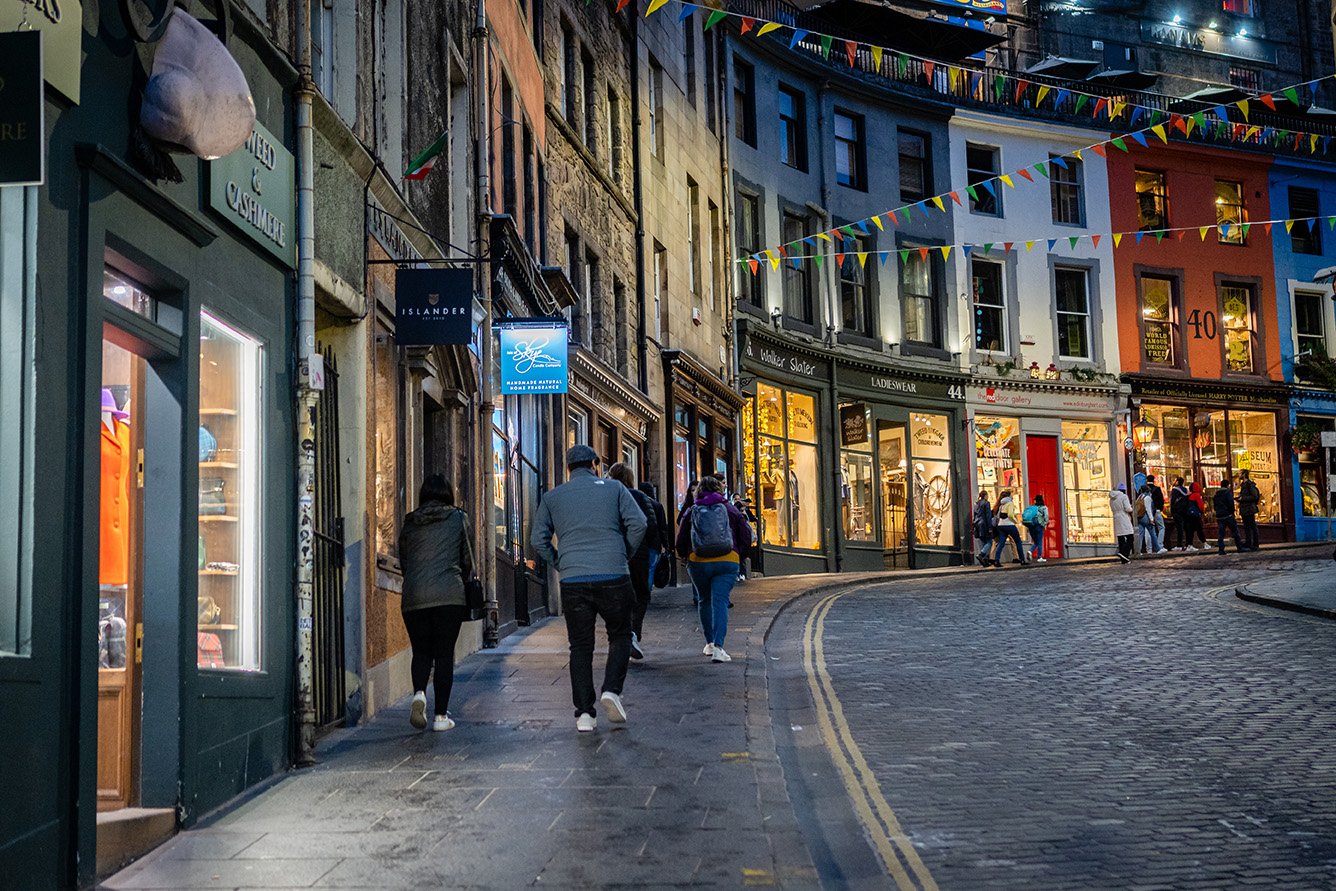 Edinburgh, Scotland. (Source: Author.)
Edinburgh, Scotland. (Source: Author.)

Edinburgh, Scotland. (Source: Author.)
On day five, we took an Uber back to the Edinburgh airport to pick up a rental car. Our plan was to head north and west, into the Scottish Highlands.
I was nervous about driving in Scotland, nervous to drive from the right-hand side of the vehicle, nervous to drive on the left-hand side of the road. I’ve been driving the American way for 29 years. I would be working against muscle memory.
To make matters worse, I hadn’t studied Scottish traffic signs in advance. The night before picking up the rental car, I gleaned what I could from our Rick Steves guidebook. Then, on the way to the airport, I peppered our Polish Uber driver with questions: “What do the zigzag lines mean at this intersection?” “How do you know what the speed limit is here?” “Why is one arrow bigger than the other on that sign?”
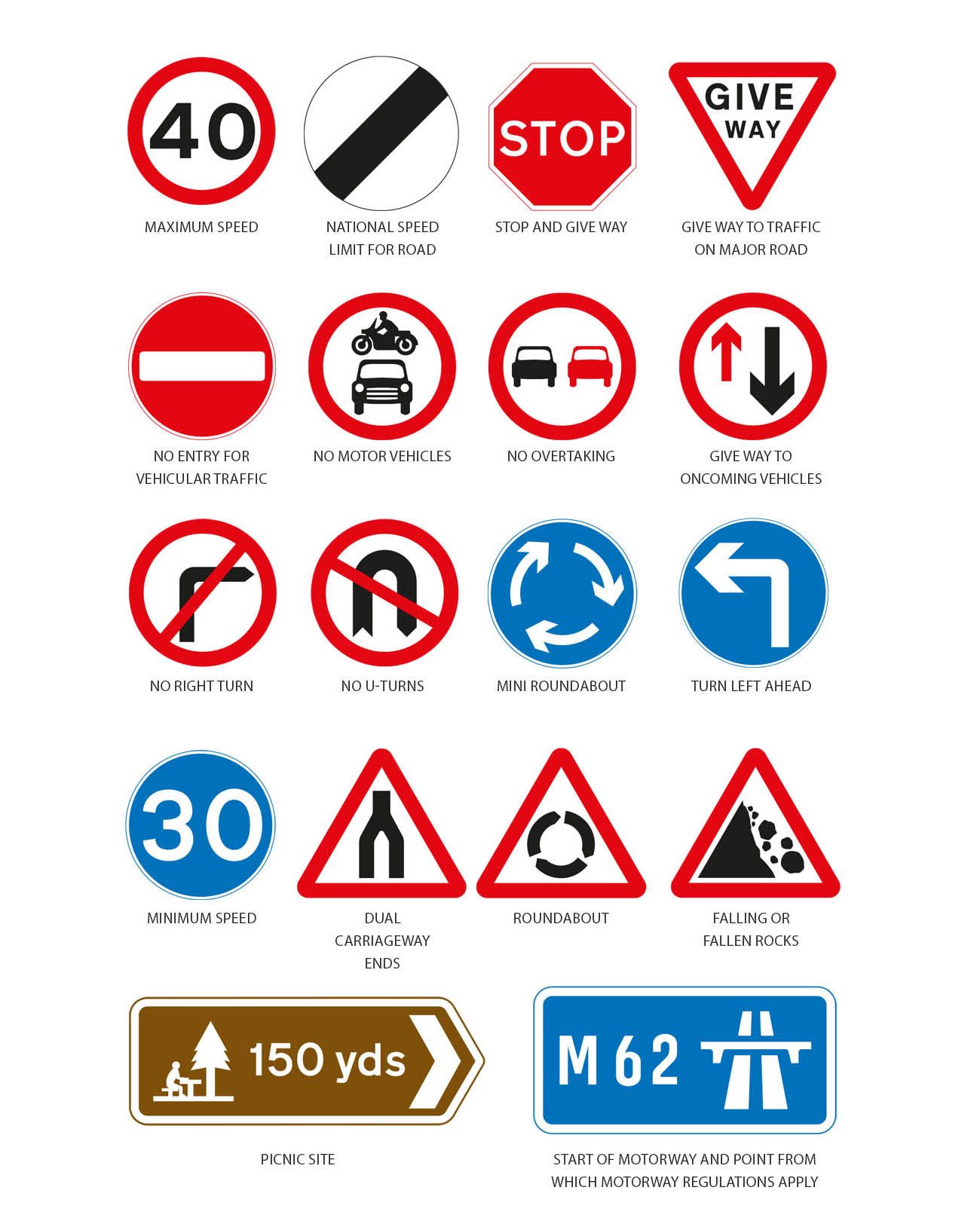
Scottish traffic signs. (Click to enlarge. Source: Live Breathe Scotland.)
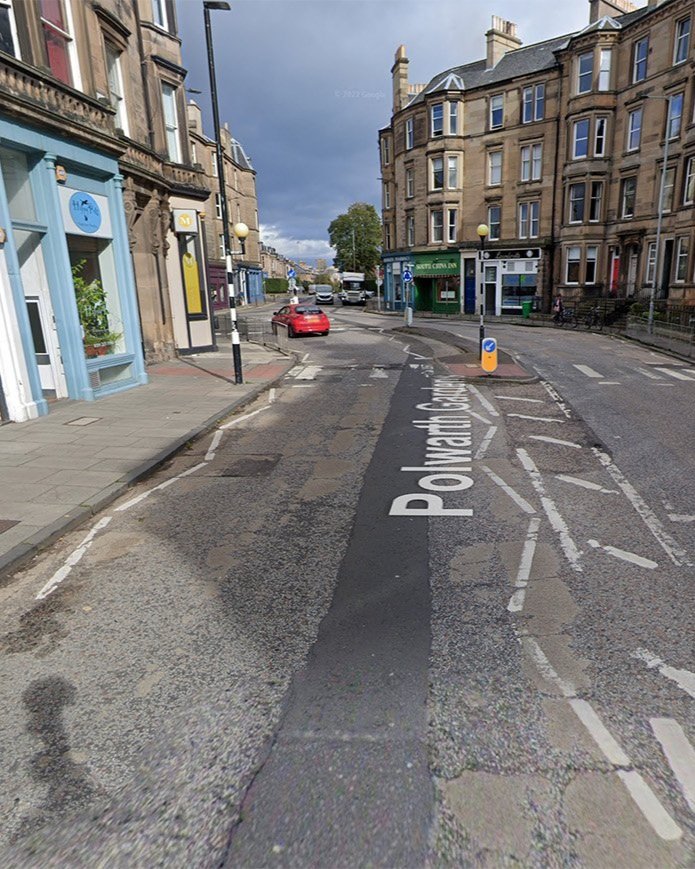
Zig-zag lines on the street. (Source: Google Maps.)
That was the extent of my preparation. And to save money, we had chosen not to add my wife, Kate, as a second driver.
After we loaded the luggage in our rental car (from a manufacturer I’d never heard of), my family and I placed bets on how many times I would be honked at over the next week of driving. To give myself a boost of confidence, and to put my passengers at ease, I said zero. Kate said two. Our daughter—who didn’t get the confidence memo—said seven.
Disoriented, and forgetting even to adjust the mirrors, I pulled out of the lot. I pointed the car, very slowly, toward the Highlands.
Mantras, Roundabouts, and Passing Places
Over the next week we drove every single day. We still did a ton of walking and hiking, but we took a car to get there. We drove on rural roads, on highways, through villages, and in mid-size towns like Inverness, Stirling, and Perth. We usually spent at least two hours per day in the car, and often more than four. In total, according to my rental car receipt, I drove 874 miles.
I acclimated soon enough to driving on the left-hand side of the road. It helped that Kate was a superb navigator. For the first hundred miles, I operated the vehicle, but she told me exactly where to put it. The three of us also developed some helpful mantras like, “Turn left, stay left,” and, “Just follow that car,” and, “Don’t hit the tour bus.”
In fact, driving on the left-hand side turned out to be one of the least interesting aspects of using a car in Scotland. There are two others I found far more interesting, especially as a Strong Towns advocate.
The first is what I think of as “continuous flow.” I estimate I stopped at less than 10 stoplights and stop signs during our whole time driving. It was far more common to encounter yield (“give-way”) signs and roundabouts. Roundabouts were everywhere, actually, and they came in all sizes and all levels of complexity. Though I mostly got the hang of them, roundabouts were the most stressful part of driving in Scotland. I never fully figured out when and where to use my blinker. Sometimes I did an extra loop just to get my bearings. Once, I even drove over a roundabout—but in my defense the roundabout was small and it was dark and no one was watching.

The roundabout I accidentally drove over. (Source: Google Maps.)

The Sheriffhall Roundabout outside of Edinburgh. (Source: Google Maps.)
All in all, we stopped mostly at our own discretion, to yield for cars that had the right of way. Other than that, we were moving.
The second memorable aspect of driving in Scotland was the prevalence of “passing places.”
In his book Raw Spirit, the late Scottish writer Iain Banks spoke lovingly about his country’s “Great Wee Roads.” A Great Wee Road (GWR), Banks wrote, is a small road that’s fun to drive. A GWR is a pleasure to drive “partly because it has less traffic, partly because it goes through lots of beautiful scenery and perhaps because it has lots of flowing curves, sudden dips, challenging hills and/or fast straights…A GWR can be extremely slow—often way below the legal limit—and still be enormous fun, it can even be a single-track road, quite busy with traffic and so somewhat frustrating, and yet still be a hoot, and some roads only become GWRs when it’s raining and you have to slow down.”
My family spent a lot of time driving single-track GWRs. These were common in the rural areas, but even many towns and villages featured narrow, single-track roads that had to accommodate cars going in opposite directions. Rather than widening these roads to two or more lanes, the way we would in North America, Scottish drivers maintain continuous flow using “passing places.” Passing places are little pullouts that appear at regular intervals along a single-track road. If a vehicle is coming toward you, or the driver behind you wants to pass, you move into a passing place on the left—or wait opposite a passing place on your right.
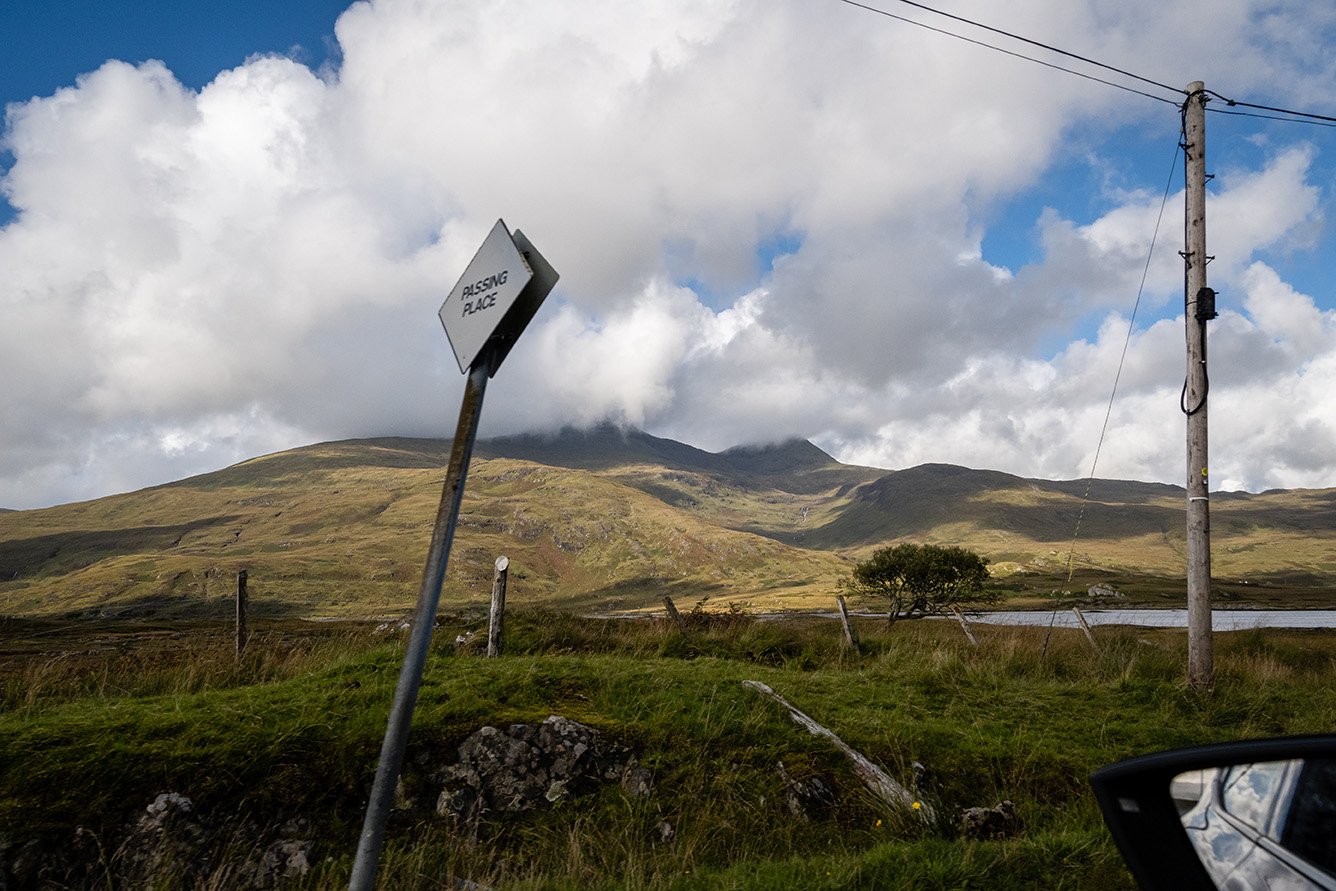
(Source: Author.)
From what I could tell, creating regular passing places has multiple benefits:
1. PASSING PLACES REQUIRE FAR LESS LAND.
As Strong Towns advocates know, land is the base resource from which community prosperity is built and sustained; it mustn’t be squandered. Widening a GWR American style would consume an enormous amount of land, especially compared to simply adding a little extra pavement every few hundred yards for a passing place.
2. PASSING PLACES ENCOURAGE NEIGHBORLINESS.
No, seriously. When someone lets you go by, you’re expected to wave. When someone waves to you, you’re expected to wave back. I got so caught up in this ritual that when I thought someone hadn’t waved, I got mildly annoyed. “Tourists,” I grumbled.
3. PASSING PLACES SLOW DRIVERS.
Officially, the speed limit on most single-track rural roads is 60 mph, but I rarely achieved that speed. You just never know when a car is going to be coming the other direction around a windy road. In the Cold War, what kept the U.S. and Soviet Union from launching nukes at each other was a military strategy called Mutually Assured Destruction, or MAD. Both countries knew that the other could absorb an all-out nuclear attack and then respond in kind. Driving on a single-track GWR seems based on the same strategy: mutually assured destruction. Drivers go slow because if a car in either direction is driving too fast, both are in danger of serious damage. You drive slower, looking ahead to see, as best you can, if other vehicles are coming toward you and where the next passing place will be.
Driving Here and There
My experience driving in Scotland shaped how I think about driving back home in the States.
I was reminded that the best way to slow cars isn’t by enforcement, speed limits, or even traffic signals—it is through road design. There are multiple design factors compelling drivers in Scotland to slow down. These include the give-and-take of yielding, the inherent complexity of roundabouts, and the formality of passing places. The perceived risk of a single-track road requires drivers to lighten up on the gas. Even the two-lane streets and roads are often narrower in Scotland than they are here. The best advice I got from Rick Steves about driving in Scotland was this: “Adjust your perceptions of personal space: It’s not ‘my side of the road’ or ‘your side of the road,’ it’s just ‘the road’—and it’s shared as a cooperative adventure.”

Sometimes you’re sharing the road not just with other cars, but with people on bikes and on foot, and with livestock like sheep and cows. (Source: Author.)
Something else that makes a driver in Scotland want to slow down is that they are often surrounded by beautiful scenery and picturesque communities. Passing places slow you down, but so does passing a place, a real place.

The town of Inveraray, Scotland. (Source: Author.)
Somewhere along the line, Americans got it in their heads that vibrant, human-scaled, enduring communities are where we vacation but not where we can live. But we deserve nice things, too, as do future generations. This is one reason why the Strong Towns movement is trying to replace the failed Suburban Experiment that has become the status quo in North America over the last 80 years, for a traditional development pattern that is time-tested, financially productive, more livable, and more lovable. Part of what made driving in Scotland so pleasurable was the chance to see some of the world’s most beautiful landscapes, as well as the chance to frequently get out of the car, to explore a town or city on foot, and to spend money there.
My Way or the Highway
By the end of our road trip, I was actually enjoying driving on Scotland’s roads. Still, it was something of a relief to hand over the keys of the rental car, with the vehicle unscathed. How many times was I honked at over the course of seven days? Remember I guessed zero, my wife guessed two, and my daughter guessed seven. The answer: One. It was on my very last day, when I made a sudden, unsignaled lane-switch in a roundabout. Maybe Scottish drivers are polite. Or maybe I’m just that good. Or maybe the Scottish roads were designed in such a way that they could safely accommodate even a backwards, turned-around Yankee like me.
From an outsider’s perspective, Scotland seems to be doing a much better job of creating safer streets and roads than the United States. We can’t make apples-to-apples comparisons between Scotland and North America, but it’s worth noting that, in 2019, the rate of pedestrian fatalities in the U.S. was more than twice that of Scotland and the rate of all types of road fatalities was more than three times as high.
The North American approach to street design—wide stroads, fast speeds—is neither the best way nor the only to design transportation infrastructure. Earlier this year, Transportation Secretary Pete Buttigieg announced an initiative to “help countries around the world learn from our best practices and expertise in planning and modernizing transportation infrastructure.” Strong Towns president Chuck Marohn said about the program: “Our hubris is only exceeded by our imprudence. In transportation, we should be asking for guidance, not offering it.” We can look to other places for inspiration. To start with, I see no reason why American traffic engineers can’t gradually incorporate more roundabouts and passing places.
I read once that engineers and planners are making pilgrimages to Amsterdam and Copenhagen to learn about bikeability. I’m all for it. And go ahead, visit Paris or Tokyo to get inspired by great public transit. If you want walkability, I can now personally recommend Edinburgh. But if you want a fresh vision for what a safe, enjoyable driving experience can be, rent a car in Scotland and go in search of the Great Wee Roads.


